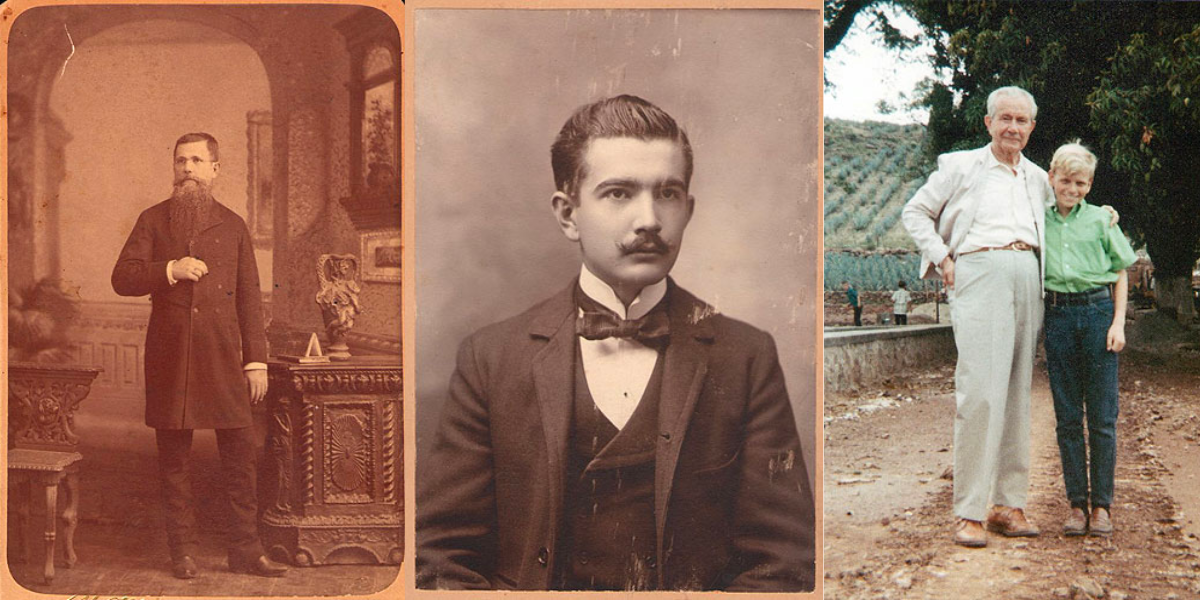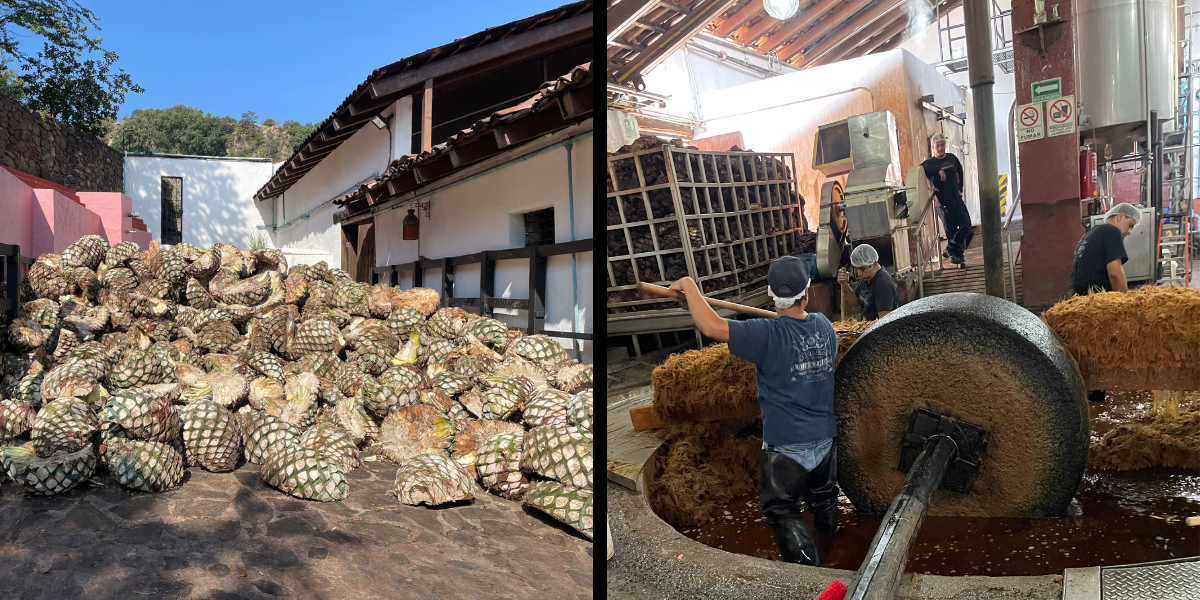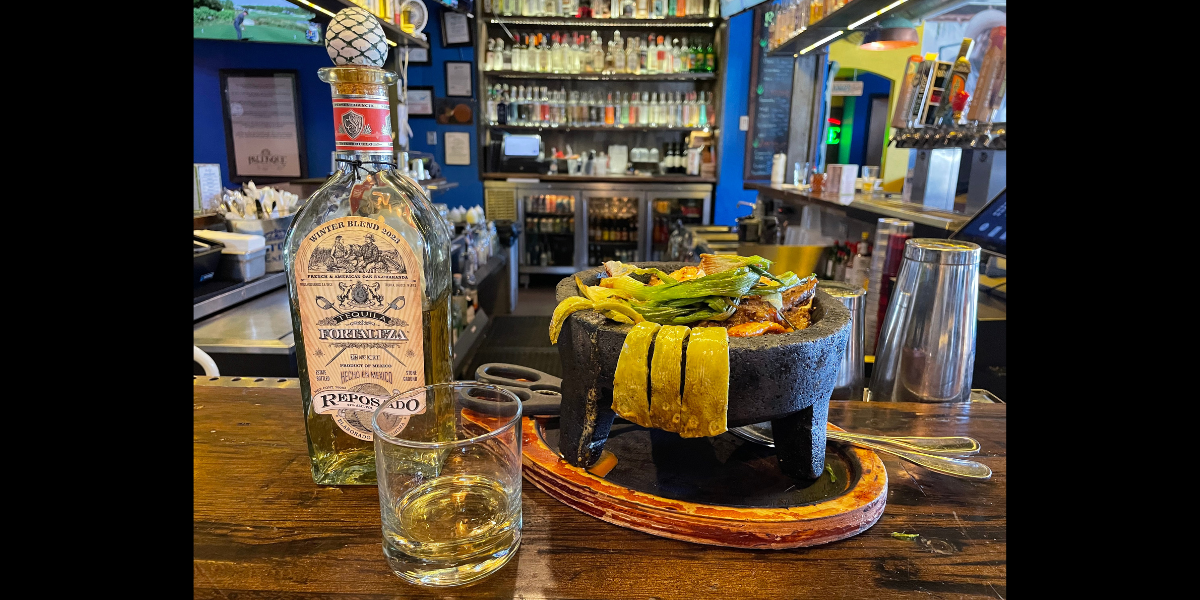The decision to embark on a trip to Tequila, Mexico was made 24 hours prior as I found myself on the LAX airport floor, engaged in a Zoom call with the Sales & Marketing Manager and Brand Ambassador for Fortaleza. Festival season’s end marks a rare time each year when I let go of my organized mindset and embrace a “que sera sera” attitude. In 2023, during my third consecutive year of exploring the land of my roots, I remembered a story the editorial team was pursuing. This led me to call Brian Rossi, the owner of Palenque Cocina y Agaveria in Littleton, while en route to Guadalajara.
Tequila had long been on my ‘To Visit’ list, and after this visit, it swiftly moved to ‘Must Visit Again.’ With a tour scheduled for the next morning, I booked a hotel during the hour-long drive, eager to rest before an epic exploration.
FIVE GENERATIONS
Fortaleza Tequila is a family’s history of the last five generations which takes us back to 1842 with the birth of the ‘Father of Tequila” Cenobio Sauza (yes, as in Sauza Tequila). As with many epic stories, this one begins out of necessity and survival when Cenobio’s father passed and he was left as the provider for the family at 16. He moved to Tequila to work under Jose Cuervo, and after learning the distilling process moved into exporting and eventually purchasing distillery La Antigua Cruz in 1873. Years later Cenobio fittingly renamed it to La Perseverancia – The Perseverance. Generations are honored on the bottleneck labels and you will see this first generation take center stage. Cenobio would become the first to export to the U.S. and beyond with the building of the railroad. He determined that blue agave, which is tequila’s main agave used to date, was the best for flavor. A smart businesses man, Cenobio purchased and sold 14 additional distilleries including Sauza’s popular headquarters, La Hacienda.
The second and third generations dedicated themselves to the family business and continued to contribute to the industry. When tequila was labeled as “the poor man’s drink” Eladio Sauza’s (2nd Gen) savvy marketing renamed it “Mexican Whiskey” to appeal to the elite and continue high sales. He also brought in machinery for faster production while maintaining integrity and classic methods. For marketing, Eladio started a newspaper to double as a promotion. Francisco Javier Sauza (3rd Gen) created the Denomination of Origin for Tequila which regulated the regions formal tequila could be grown in. He heavily marketed Sauza worldwide as a Mexican product including rebranding the bottles and beginning to age in wood barrels. Javier was also a man of the people who gave back to the community by founding hospitals and schools and creating community entertainment such as Noches Tapatias.

Cenobio, Eladio, Javier & Guillermo Photos Courtesy of Fortaleza
After the Sauza family’s contributions and growth of the tequila industry, for their own reasons, they decided to sell Sauza to Pedro Domecq, however, they held onto their land with the distillery. Javier’s grandson, Guillermo Erickson Sauza, who grew up visiting his grandfather returned to Tequila in 1999 to raise the family legacy on the land with Los Abuelos and Fortaleza Tequila. His son, Billy (6th Gen), is also involved and continues the work of his father and grandfathers.
THE ART OF PRODUCTION
When I scheduled the tour, I anticipated heading to a large, industrial distillery like the ones we have here or like the wineries of California. What was behind the gates is completely opposite. There are renovated but older, small, white buildings and whilst busy with staff, the atmosphere was serene. You won’t find giant noisy machinery, instead, there are small teams working on each step of the distilling process. Part of Fortaleza’s mission is to keep a small production in order to maintain quality.
On the side of the agaveria, I learned about how the jimadores care for the blue agave. When you look up from the property you see a geological surprise, there’s a volcano! While it’s been inactive for longer than humans have existed, it created the perfect mineral soil for growing the nectar plant in a fairly dry and sunny environment. To control weed growth, goats roam the property to feast and eliminate the pesky plant, allowing the agave to remain untouched by chemicals. What they nurture is the flavorful heart of the agave located in the center and revealed once the leaves are hacked off. There is a method to everything including when the leaves are cut and when the baby plants are removed and replanted all to ensure the best flavor. Everything is recycled and reused, for example, the leaves will be used to fertilize the soil for future groves.

After being harvested, the heart of the agave goes into large room-size ovens to steam for 36 hours and convert to sugar. Utilizing a volcanic large rock they run through a few rounds of pressing the agave and streaming it through filtration to get the final nectar. The fibers created during the pressing process get used either as compost or given to vendors to make goods to sell. There are wood barrels used for fermenting the tequila and a copper “alambique” used for condensation and distillation.
The bottling process is just as impressive. Where I expected conveyor belts, there were human hands. The bottles distributed in Mexico are all glass-blown, while in the US we consume from bottles that can withstand exportation. There is one machine that runs tequila through hose lines and spigots, and it doesn’t stop until the tank runs dry. This means, the machine must be manned for hours with each bottle being filled by hand. Have you ever noticed that the corks and tops are each unique? That is because each is molded, painted, and perfected by hands, not large production machines. There is a room where the molds are being made, painted, and shaved down, another where they’re connecting the cork to the agave heart top, and for every stage, QA reviews each item. The thoughtfully designed label that is placed by a hand-run machine, the tequila that is being poured, the shape of the top, and the application of the cork onto the top are all so you can enjoy a clean tequila drink at your table.
TO YOUR LOCAL TABLE
With full belief in quality over quantity, Fortaleza is considered a rare and precious find. Luckily, we have a few places where we can locally consume this limited tequila in Denver such as Machete, Mama Lolita’s, and of course Brian’s Palenque in downtown Littleton. Fortaleza produces four tequilas: Fortaleza Blanco, Fortaleza Blanco (Still Strength), Fortaleza Reposado, and Fortaleza Añejo. Every November there is a special Winter Blend with only 5,000 bottles distributed. Once back in Denver, I headed to Palenque to taste the exclusive Winter Blend with the rules I had learned back in the cave tasting room of Fortaleza. I swirled the tequila making sure it was clear, I took in the aroma, and finally slowly sipped on my pour tasting each note on my palate.

As a tequila lover, I can enjoy a straight pour. If you prefer some mixings, Palenque offers Fortaleza Margaritas on their menu. And might I also suggest indulging in a Molcajete whose flavors put me right back in Mexico?
Having witnessed the purity and hard work of generations, I left Fortaleza filled with the pride of the Sauza family. They have built and rebuilt as men of the business, but also men of the people. The care they put into the product, their staff, and their community is visible in their production and tasted in their tequila. If you have not yet, which is likely, make it a point to find yourself at a table imbibing on Fortaleza.
